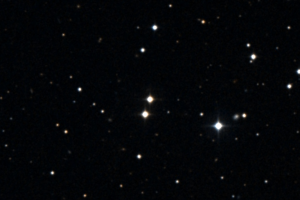Four planets (at least) for two stars. The study: “The GAPS Programme at TNG. LIII. New insights on the peculiar XO-2 system” of A. Ruggieri (Università di Padova) appeared on A&A

Every sci-fi enthusiast, especially Star Wars fans, has wondered whether planets orbiting two stars, like Tatooine, can exist in reality. This is actually an important question in astronomy: It has been estimated that in the Milky Way, one-third of low-mass stars are in binary systems. Therefore, to fully understand the population of planets in our Galaxy, it is necessary to identify planets in binary systems, study the differences between their properties and those of planets orbiting single stars, and investigate the stability of such systems.
To date, only five binary systems with planets are known. Among these, the XO-2 system is particularly significant. The two stars (XO-2N and XO-2S) are separated by about 4600 astronomical units (a.u.; 1 a.u. corresponds to the mean Sun-Earth distance, which is about 150 million km), and they are both solar-type stars. The only noticeable differences between the two stars are their planetary systems and their content of elements heavier than hydrogen and helium (the metallicity). Studies published in recent years have identified one planet orbiting around XO-2N and two planets around XO-2S. Additionally, the metallicity of XO-2N is slightly higher than that of XO-2S. This is an intriguing aspect of the system since the two stars likely formed together. Therefore, the different metallicity could result from distinct planet formation processes hosted by the two stars. For example, it is possible that XO-2N may have accreted more planetesimals than its companion star, thereby increasing its content of heavy elements.
The team of researchers led by the astronomer A. Ruggieri, from the University of Padua, has analyzed new observations of XO-2, obtained with the Telescopio Nazionale Galileo as part of the GAPS project (Global Architecture of Planetary Systems). The observations span a period of 9 years, allowing the researchers to confirm the existence of previously discovered planets and to identify a new Jovian planet (with a minimum mass of 3.71 Jupiter masses and a semi-major axis of its orbit of 5.5 a.u.) orbiting XO-2S. Additionally, the researchers have confirmed the stability of this peculiar planetary system, which can provide valuable insights into the formation and evolution of planetary systems in binary systems. The study is detailed in the paper titled “The GAPS Programme at TNG. LIII. New insights on the peculiar XO-2 system“, recently published in Astronomy & Astrophysics. Among the co-authors is also the astronomer S. Benatti from INAF – Astronomical Observatory of Palermo.
The cover figure (click here to view it in its entirety) depicts an image from the Sloan Digital Sky Survey showing XO-2, the two stars in the center.
